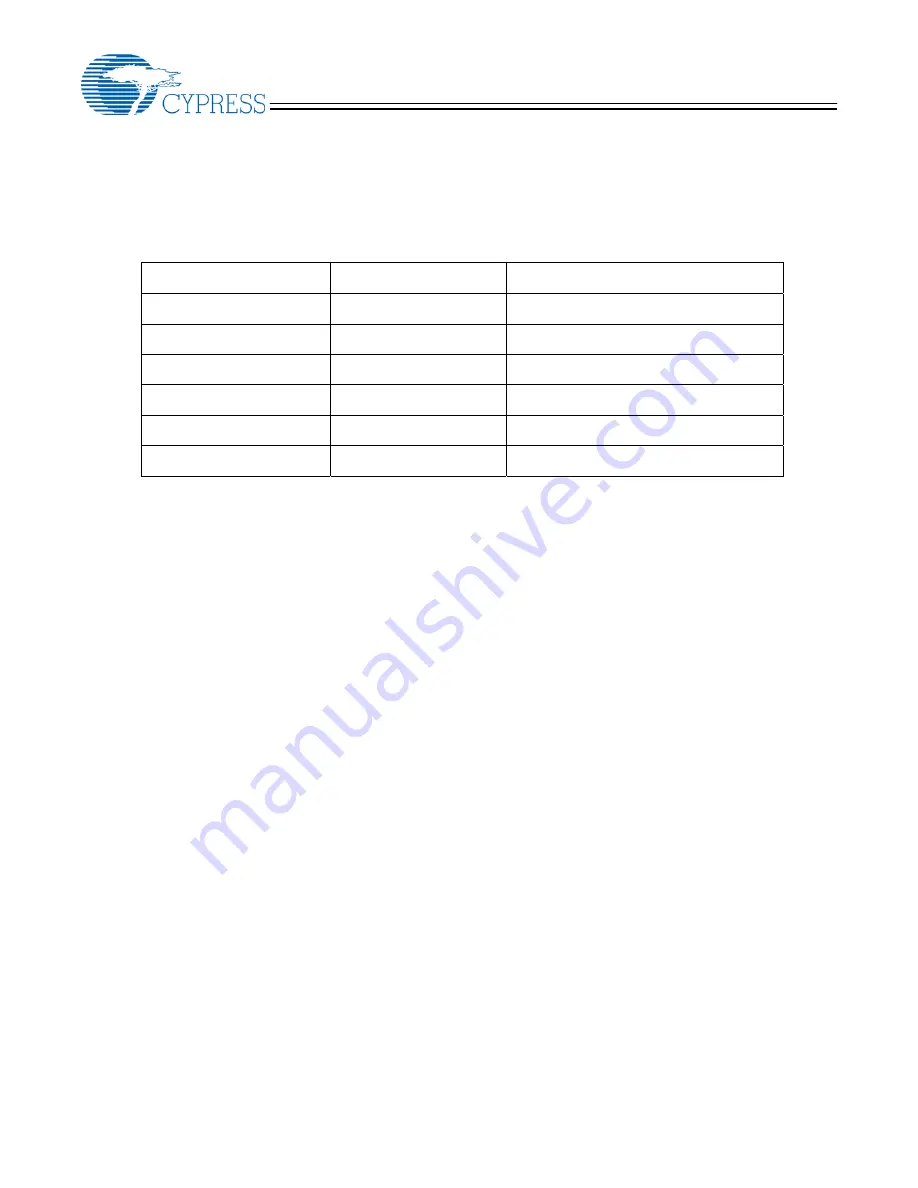
CY3655 Hardware User Guide
Pushbuttons and LEDs
Three pushbuttons and three LEDs are available on the board for general purpose use. The
following table shows the enCoRe II signal name relation to the pushbutton or LED and its
jumper.
Pushbutton or LED
Jumper
enCoRe II Signal Name
D1 LED
J12
P0.5
D2 LED
J17
P0.6
D3 LED
J19
P1.3
S1 Pushbutton
J11
P0.2
S2 Pushbutton
J16
P0.3
S3 Pushbutton
J18
P0.4
The jumpers can be used to isolate the LED or pushbutton from the enCoRe II if desired. Note
that the LEDs use the same power as the enCoRe II. Driving the enCoRe pin low illuminates
the LEDs, and pushbutton presses can be detected by making the appropriate enCoRe II pin
an input with the pull-up enabled and detecting a low level when the button is pressed. Also
note that the pushbutton inputs are connected to enCoRe II pins that can be configured as
external interrupt pins.
Suggestions for Connecting the Pod
The Applications board can be used in conjunction with PSoC Designer and a pod for
development using the ICE-Cube in-circuit emulator. To do this, place either the PDIP-40 or
PDIP-24 foot into the socket at U1 and attach the pod. Note that the PDIP-18 and PDIP-16
feet cannot be used on the Applications board as their pin-outs differ substantially from the
PDIP-24 foot.
External Crystal or Ceramic Resonator Use
An external crystal or ceramic resonator can be used with the PDIP-40 part if a custom
frequency or tighter tolerance frequency is needed. The footprint at Y1 on the board can be
loaded with an HC49 sized through-hole or surface-mount crystal. Optionally a two- or
three-pin ceramic resonator can be used in this position. When using a crystal or ceramic
resonator, the resistors R2 and R3 should be removed to isolate the clock signals from the rest
of the board. Positions C4 and C5 should be populated with the appropriate load capacitance
for enCoRe II and the chosen crystal or ceramic resonator. Note that three-pin ceramic
resonators with built-in load capacitors do not need external capacitors loaded. Refer to the
enCoRe II data sheet for details on crystal or ceramic resonator specifications. Note that the
24-pin enCoRe II device does not support external crystals or ceramic resonators.
Page 7 of 16



































